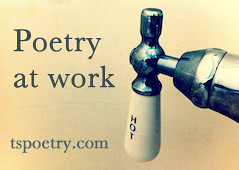I can’t think of anyone working today who doesn’t talk about crises at work. Opportunities seem to abound for missteps, mistakes, false impressions, outright distortions, and rumors both false and true. Social media can amplify and in fact create crises for both organizations and individuals, both of whom can also do a good job of creating crises on their own.
At times, it feels like we careen from crisis to crisis, with everything assuming an urgency that demands immediate attention from too few people. Important, critical work is set aside to deal with crises, sometimes never to be touched again. I once had a boss who referred to this as ‘the tyranny of the urgent at the expense of the important.”
Each crisis may share common elements with others, but each is also (usually) different. What crises do share is an unexpectedness; an urgency to do something even if it’s not clear what the something is; a difference of opinions within the organization as to what to do; an overreliance on legal counsel (or influence); and a tendency to feed on each other, leading to a “crisis mentality” or “crisis culture” for managing work.
Where crises differ is in their immediate cause; the people involved in managing it; and what they can actually teach. Some crises are one-off, never to be repeated. Others, in the repetition, reflect something fundamentally flawed in the organization.
Crises are the poetry of surprise, upset, and human frailty. They are often the poetry of organizational change, the poetry of disruption of the status quo. They can speak powerfully to an organization’s managers and people, and they can also fall on deaf ears. Crises expose our humanity, both flawed and good; our limitations and potential reach; our courage and our fears. And they do all of these things simultaneously.
A light movement of wind,
a small ripple in the water,
a comment, a tweet, a post,
a few words, and it begins.
A storm, a tsunami,
a hurricane, an eruption
sudden and unexpected,
a crash, and it begins.
Back to normal becomes
a place of no return.
It’s difficult to see when you’re in the thick of a crisis, but you can look for the poetry that’s there, because it is there. You can see it in the themes, the metaphors, the rhythm and flow, what words are used and how they are used. And finding the poetry in the crisis will suggest the path forward.
Photograph by kudumomo. Creative Commons, sourced via Flickr. Poetry at Work™ post by Glynn Young, author of the novels Dancing Priest and the recently published A Light Shining.
___________
Buy a year of happy work mornings today, just $5.99. In April we’re exploring the theme Dragons and Creatures.
Now you can easily follow our new Poetry at Work posts. Add one of our Poetry at Work badges to your blog or website today!
- Poets and Poems: Forrest Gander and “Mojave Ghost” - March 27, 2025
- Poets and Poems: Siân Killingsworth and “Hiraeth” - March 25, 2025
- Poets and Poems: Donna Hilbert and “Gravity” - March 20, 2025



Doug Spurling says
Thanks Glynn, good timing for crisis management lesson. Perhaps this post was scheduled prior to our countries most recent crisis (Boston Marathon Bombings) like many things, the clock still ticks, the sun still rises and sets. And in the heat of crisis mundane things seem out of place. But, this piece is timely and relevant. Thanks.
L.L. Barkat says
That poem ending. Yes.
You’ve grown so much as a poet, Glynn. I’m thinking that today and simply marveling. I wonder if the crises were part of the mix.